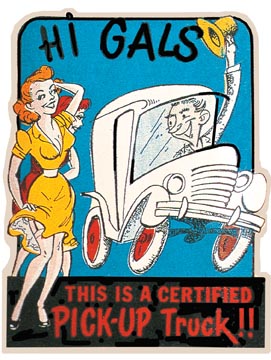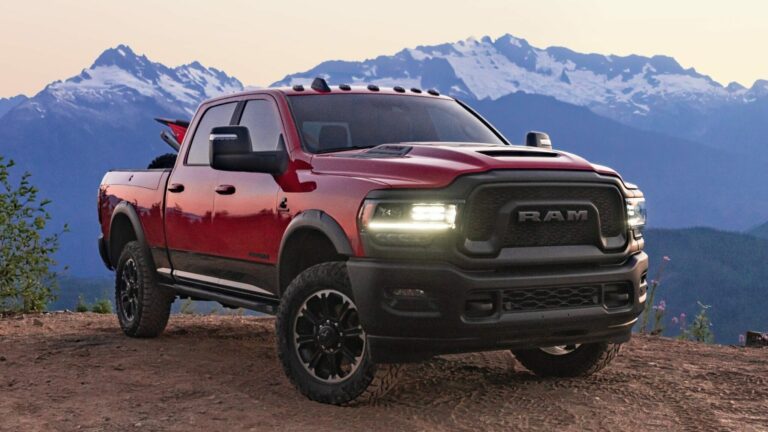Beach Trucks For Sale: Your Ultimate Guide to Finding the Perfect Coastal Companion
Beach Trucks For Sale: Your Ultimate Guide to Finding the Perfect Coastal Companion cars.truckstrend.com
The allure of the beach is undeniable – the sun on your skin, the sound of waves crashing, and the endless horizon. But for many, true beach liberation comes with the ability to drive right onto the sand, set up camp, and have all your gear conveniently at hand. This is where the "beach truck" enters the scene. More than just a vehicle, a beach truck is a lifestyle enabler, a rugged companion designed to conquer soft sands, carry your surfboards, fishing gear, and coolers, and endure the corrosive embrace of salt air and water.
This comprehensive guide is your essential resource for navigating the exciting world of beach trucks for sale. Whether you’re a seasoned surf enthusiast, an avid angler, or simply dream of effortless beach access, understanding what makes a great beach truck and how to find one is crucial. We’ll delve into key features, popular models, the buying process, and vital maintenance tips to ensure your investment brings years of sandy adventures.
Beach Trucks For Sale: Your Ultimate Guide to Finding the Perfect Coastal Companion
What Makes a Great Beach Truck? Key Features & Considerations
A true beach truck isn’t just any 4×4. It’s a vehicle specifically equipped or adaptable to the unique challenges of coastal environments. When evaluating beach trucks for sale, keep these critical features in mind:
1. Drivetrain: 4×4 is Non-Negotiable
The most fundamental requirement for a beach truck is a robust four-wheel-drive (4×4) system. Soft sand demands maximum traction, and a 2WD vehicle will almost certainly get stuck. Look for:
- High and Low Range: Essential for crawling through deep, soft sand or pulling heavy loads.
- Locking Differentials: Front and/or rear lockers can provide crucial traction when one wheel loses grip, though less common on stock vehicles, they are a huge advantage.
- All-Wheel Drive (AWD): While some AWD systems are capable on hard-packed sand, dedicated 4×4 with low range is generally preferred for varied beach conditions.

2. Corrosion Resistance: Battling the Salt Monster
Saltwater and salt air are the archenemies of metal. Rust is a constant threat, and a beach truck must be built to withstand it or meticulously maintained.
- Underbody Coating: Factory or aftermarket rust-proofing treatments are invaluable.
- Frame Condition: Inspect the frame thoroughly for existing rust, especially near welds and mounting points.
- Body Panels: Check wheel wells, rocker panels, and door sills for bubbling paint or visible rust. Aluminum bodies (like newer Ford F-150s) offer superior corrosion resistance.

3. Tires: Grip on the Grains
The right tires make all the difference on sand.

- All-Terrain (AT) or Mud-Terrain (MT) Tires: These offer a good balance of off-road traction and on-road manners.
- Wide Footprint: Wider tires distribute the vehicle’s weight over a larger area, reducing ground pressure and helping the vehicle float over sand rather than dig in.
- Ability to Deflate: While not a feature of the truck itself, the ability to air down tires (to 15-20 PSI) significantly increases the tire’s footprint and is critical for sand driving. An onboard air compressor or portable inflator is a must-have accessory.
4. Ground Clearance & Suspension
Higher ground clearance helps prevent the undercarriage from dragging in ruts or getting hung up on mounds of sand.
- Stock Clearance: Many 4×4 trucks and SUVs offer sufficient clearance.
- Lift Kits: Aftermarket lift kits can provide additional clearance but may affect handling and fuel economy.
- Suspension Components: Ensure springs, shocks, and bushings are in good condition, as beach driving can be tough on these parts.
5. Interior Washability & Durability
Sand gets everywhere. A beach truck’s interior should be easy to clean.
- Vinyl or Rubber Flooring: Far superior to carpet for quick sand removal and moisture resistance.
- Durable Upholstery: Marine-grade vinyl or easily washable fabric is ideal. Leather can be good but requires more care.
- Drain Plugs: Some older Jeeps and newer models offer floor drain plugs for easy hose-outs.
6. Storage & Utility
Consider how much gear you’ll be hauling.
- Bed Space (Pickups): Ample room for coolers, chairs, fishing rods, and more. Bed liners are essential.
- Roof Racks: Great for surfboards, kayaks, or extra gear.
- Towing Capacity: If you plan to tow a small boat, jet skis, or a utility trailer, ensure the truck has adequate towing capabilities and a hitch receiver.
Types of Beach Trucks: Finding Your Perfect Ride
The "beach truck" category is diverse, ranging from classic utilitarian vehicles to modern, comfortable cruisers.
-
Classic/Vintage Beach Trucks:
- Examples: Ford Bronco (1st Gen), Chevy K5 Blazer, Jeep Wagoneer, older Land Cruisers (FJ40, FJ60).
- Pros: Iconic style, often simpler mechanics, strong aftermarket support for restoration.
- Cons: Higher maintenance, less fuel-efficient, may lack modern safety features, can be expensive to restore.
- Ideal For: Enthusiasts seeking a project or a unique, head-turning vehicle for occasional beach runs.
-
Modern Mid-Size Pickups:
- Examples: Toyota Tacoma, Ford Ranger, Nissan Frontier, Chevy Colorado/GMC Canyon.
- Pros: Excellent balance of capability and daily drivability, reliable, good aftermarket support, better fuel economy than full-size.
- Cons: Less interior space than full-size, smaller beds.
- Ideal For: Those needing a versatile truck that can handle daily commutes and weekend beach adventures.
-
Full-Size Pickups:
- Examples: Ford F-150, Ram 1500, Chevy Silverado 1500, Toyota Tundra.
- Pros: Ample passenger and cargo space, high towing capacity, powerful engines, comfortable ride.
- Cons: Larger footprint can be harder to maneuver in tight spots, potentially lower fuel economy, may be overkill for light beach use.
- Ideal For: Families, those needing serious towing capacity, or anyone who values space and comfort on and off the sand.
-
Beach-Capable SUVs:
- Examples: Jeep Wrangler, Toyota 4Runner, older Land Rovers/Range Rovers, certain older SUVs with true 4×4.
- Pros: Enclosed cargo area protects gear from elements, often good ground clearance and short wheelbases (Wrangler), comfortable for passengers.
- Cons: Less open cargo space than a pickup bed, can be heavier, not all SUVs are truly beach-ready (avoid car-based crossovers).
- Ideal For: Families, those who prefer an enclosed cargo area, or prioritize passenger comfort.
Where to Find Beach Trucks For Sale
Finding the right beach truck requires a bit of detective work. Here are the best places to look:
- Online Marketplaces:
- General: Craigslist, Facebook Marketplace, AutoTrader, Cars.com, eBay Motors. Use specific search terms like "4×4," "off-road," "beach," and "lifted."
- Specialty: Expedition Portal, specific model forums (e.g., TacomaWorld, Bronco forums) often have "for sale" sections.
- Local Dealerships: Both new and used car dealerships will have a range of 4×4 trucks and SUVs. While they may not be explicitly marketed as "beach trucks," you can assess their suitability.
- Off-Road and Custom Shops: These businesses often buy, sell, and build custom off-road vehicles, which are prime candidates for beach use. They may have inventory or know of vehicles for sale.
- Auctions: Government surplus, public auto auctions, and online auction sites can sometimes yield good deals, but require careful due diligence as vehicles are sold "as-is."
- Private Sellers: Check local classifieds, community boards, and word-of-mouth. Buying from a private seller can sometimes offer better value but requires more self-reliance in the inspection process.
The Buying Process: Tips for a Smooth Purchase
Once you’ve identified potential beach trucks for sale, follow these steps to ensure a smart purchase:
- Set a Realistic Budget: Beyond the purchase price, factor in insurance, registration, potential modifications (tires, lift), and ongoing maintenance. Beach trucks often require more specialized care.
- Thorough Inspection is Paramount:
- Rust, Rust, Rust: This cannot be stressed enough. Inspect the frame (especially box sections), rocker panels, wheel wells, and underbody for rust. Pay close attention to areas where salt water might pool.
- Mechanical Check: Test the 4×4 system (high and low range), check for fluid leaks, inspect brakes, suspension components (shocks, bushings, springs), and steering.
- Engine & Transmission: Listen for unusual noises, check fluid levels and condition.
- Interior & Electrical: Ensure all lights, gauges, AC/heat, and power accessories work. Check for signs of water intrusion or mold.
- Tires: Check tread depth and look for uneven wear, which could indicate alignment issues.
- Get a Pre-Purchase Inspection (PPI): If possible, have an independent mechanic (preferably one experienced with 4×4 vehicles) perform a comprehensive inspection. This small investment can save you thousands in future repairs.
- Test Drive: Drive the truck on various surfaces if possible, including some unpaved roads to test the 4×4 engagement. Listen for any unusual sounds from the drivetrain or suspension.
- Vehicle History Report: Obtain a CarFax or AutoCheck report using the VIN. Look for accidents, flood damage, salvage titles, or inconsistent mileage. Flood damage is a huge red flag for beach trucks.
- Negotiate Wisely: Be prepared to negotiate the price. Research comparable sales and be firm on your budget. Don’t be afraid to walk away if something feels off.
- Paperwork: Ensure the title is clear, and you receive a bill of sale that accurately describes the vehicle and purchase terms. Understand your local requirements for title transfer and registration.
Maintenance & Ownership: Keeping Your Beach Truck Running Strong
Owning a beach truck means committing to a specific maintenance regimen to combat the harsh coastal environment.
- Immediate Post-Beach Rinse: As soon as you leave the beach, thoroughly rinse the entire vehicle, especially the undercarriage, frame, and brake components. A pressure washer with a wide spray nozzle is ideal.
- Regular Washing & Waxing: Wash the body regularly to remove salt residue. Apply a good quality wax to protect the paint.
- Underbody Protection: Consider applying a lanolin-based rust preventative (like Fluid Film) to the frame and undercarriage annually, especially before winter or heavy beach use.
- Fluid Checks: Regularly check engine oil, transmission fluid, differential fluids, and transfer case fluid. Water can contaminate these if you venture into deep water.
- Tire Care: Maintain proper tire pressure for on-road driving, and remember to air down for sand. Re-inflate immediately after leaving the sand. Rotate tires regularly.
- Suspension & Steering Inspection: Salt and sand are hard on bushings, ball joints, and tie rods. Inspect these components periodically for wear or damage.
- Brake Inspection: Salt can accelerate corrosion of brake lines and calipers. Check them regularly.
- Interior Care: Vacuum sand frequently. If you have carpet, consider heavy-duty floor mats or even removing the carpet for vinyl.
Beach Trucks For Sale: Estimated Price Ranges
Prices for beach trucks vary widely based on make, model, year, condition, mileage, and modifications. The table below provides estimated ranges for common types of beach-capable vehicles in good, running condition. These are not exact "for sale" prices but rather general guidelines.
| Category | Example Models (Commonly Seen as Beach Trucks) | Estimated Price Range (USD) | Key Considerations |
|---|---|---|---|
| Entry-Level/Older | Older Jeep Cherokees (XJ), Ford Explorers (1st/2nd Gen), Older Full-Size Pickups (90s) | $5,000 – $15,000 | Focus on mechanical soundness and minimal rust. May require more immediate maintenance. Great for budget-conscious buyers or DIY enthusiasts. |
| Mid-Range/Used | Toyota Tacoma (2nd Gen), Ford Ranger (older), Nissan Frontier, Jeep Wrangler (TJ/JK), Toyota 4Runner (3rd/4th Gen), Ford F-150 (early 2000s) | $15,000 – $35,000 | Good balance of capability, reliability, and modern features. Wide availability. Condition is key – scrutinize for rust and wear. |
| Premium/Newer | Toyota Tacoma (3rd Gen), Ford F-150 (newer Gen), Ram 1500, Jeep Wrangler (JL), Toyota 4Runner (5th Gen), Ford Bronco (new) | $35,000 – $70,000+ | Modern tech, comfort, and advanced off-road features. Higher initial cost but potentially lower immediate maintenance. New models are at the top end. |
| Classic/Restored | 1st Gen Ford Bronco, K5 Blazer, FJ40 Land Cruiser (well-restored) | $40,000 – $100,000+ | Price heavily depends on restoration quality and originality. Often more of a collector’s item than a daily driver beach truck. |
Note: These are general estimates. Highly modified, custom-built, or exceptionally rare vehicles can command significantly higher prices.
Frequently Asked Questions (FAQ) about Beach Trucks For Sale
Q1: What is the single most important feature to look for in a beach truck?
A1: A robust 4×4 system with low range, combined with excellent rust resistance (or lack of existing rust). Without 4×4, you’ll get stuck, and without rust resistance, your truck will quickly deteriorate.
Q2: Can I use a 2WD truck on the beach?
A2: Generally, no. While a 2WD truck might manage on very hard-packed, flat sand at low tide, it’s highly susceptible to getting stuck in soft sand. For reliable beach access, 4×4 is essential.
Q3: How often should I wash my beach truck after driving on the sand?
A3: Immediately after leaving the beach is ideal. At minimum, a thorough rinse of the undercarriage and body should be done as soon as possible to prevent salt corrosion.
Q4: What kind of tires are best for driving on sand?
A4: All-terrain (AT) or mud-terrain (MT) tires are generally good. The key is to air them down to 15-20 PSI (check your vehicle’s specific recommendations and tire limits) to increase the contact patch and allow the vehicle to "float" over the sand.
Q5: Is rust inevitable for a beach truck?
A5: While the coastal environment is highly corrosive, rust is not inevitable if proper preventative measures are taken and maintained. Regular rinsing, underbody coatings, and vigilant inspection can significantly mitigate rust formation.
Q6: Should I buy a new or used truck for beach driving?
A6: For a dedicated beach truck, a used vehicle often offers better value. You can find capable 4×4 trucks at a lower price point, making potential dings, scratches, or wear and tear from beach use less financially painful than on a brand new vehicle.
Conclusion: Embrace the Beach Life
The dream of effortless beach access is well within reach with the right beach truck. From the rugged utilitarianism of classic 4x4s to the refined capability of modern pickups and SUVs, there’s a perfect coastal companion for every budget and need.
Remember that finding your ideal beach truck involves more than just a purchase; it’s an investment in lifestyle. Prioritize robust 4×4 capabilities and, above all, be vigilant about corrosion. A thorough pre-purchase inspection and a commitment to regular maintenance will ensure your beach truck remains a reliable gateway to countless sun-drenched days and unforgettable adventures on the sand. So, start your search, do your homework, and prepare to unlock the ultimate beach experience!





